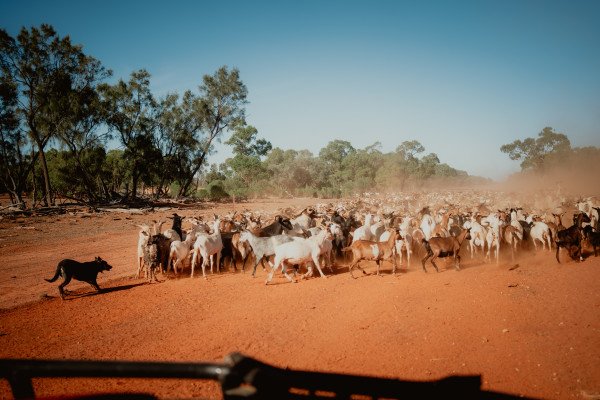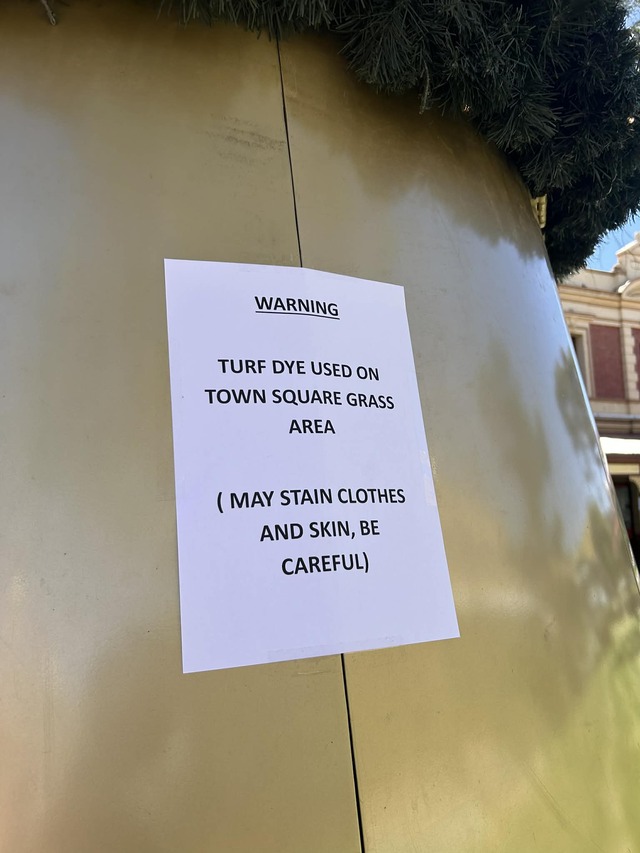PRIMARY producers throughout the Far West region say decisions made regarding the implementation of Electronic Identification Tagging (eID) for livestock have been made without adequate consultation over concerns about cost to producers and dated technology.
Lachlan Gall, a local landholder and councillor with the Pastoralists’ Association of West Darling (PAWD), said he believed the costs associated with administering eID technology extrapolated would cost more than a billion dollars over the next 10 years, with the majority of that cost to be paid by producers.
“It’s the cost and the fact that the decision makers have adopted the wrong technology that we’re concerned about,” Mr Gall said.
“There’s been no consultation with those that are paying for them, the livestock producers. It’s been brought down on us as a non-negotiable mandate.”
As of January 1 2025, any sheep or goat born must be electronically tagged prior to leaving their property of birth.
Previously producers were using earmarking and visual tags or plastic e-tags to identify stock, at an estimated cost of about 40c a head, according to Mr Gall.
With new the new mandates, Mr Gall said producers would be looking at forking out about $2 a head to electronically tag livestock.
Mr Hall farms sheep, cattle and Rangeland goats on his property, and said the cost of these mandates had the potential to put primary producers out of business.
“There’s been media reports of livestock producers reconsidering their involvement in the merino sheep game,” Mr Hall said.
“It’s been depressed for many years, and it already feels for merino producers that we’re running a not for profit at the moment, without the added cost of electronic tags imposed on us.”
NSW Department of Primary Industries and Regional Development’s director of Sheep and Goat Traceability, Kiowa Fenner, said that mandating eID tagging would ensure traceability for NSW livestock.
“The introduction of mandatory eID for sheep and goats represents a significant step forward in biosecurity and livestock management for the NSW sheep and goat industry,” Ms Fenner said.
But Mr Gall said producers weren’t being listened to when advocating for Ultra High Frequency (UHF) technology, which he believed to be more affordable and effective than eID.
“We’ve been recommending that UHF technology be adopted instead of electronic tags, because UHF technology is cheaper than the technology that has been adopted, and technologically speaking, also performed better than low frequency technology,” he said.
“Tags are able to be read up to 10 times faster and at a range of 10 times further away than the low frequency tags we’re being forced to use.”
Tom Gunthorpe, a farmer, engineer and co-founder and director of Agriscan, an agricultural technology company providing UHF tags for cattle, sheep, goats and pigs, said that UHF technology was being used across many other industries effectively already.
“UHF technology is used in just about every other industry, pharmaceutical, defence, retail, the list goes on,” he said.
“But low frequency has been static for many years and is only used for livestock. No other industry is investing in it, and for good reason.”
Mr Gunthorpe has been working with UHF technology since 2012, and using the technology with livestock since 2014, and said that using eID technology was like using a 2G phone.
“They’ll say don’t fix what’s not broke, well the 2G phone wasn’t broken, but we’ve moved to 5G,” he said.
“We’ve got the advantages of advances in technology, but we’re not able to enjoy that in this industry.
“So, as an industry we’re missing out on the productivity gains and cost benefits of an advanced technology.”
A spokesperson from NSW DPIRD said there were currently no UHF tag options for adoption in NSW or nationally that have been approved under the Integrity System Company, which is a national system of food safety measures to assure quality and traceability from paddock to plate.
“While UHF tags have some advantages, current Low Frequency eID tags remain the superior option,” the spokesperson said.
“Low Frequency (LF) electronic devices are a proven technology that has been in use in the cattle industry, where eID has been mandatory in NSW since 2004, and in Victoria’s sheep and goat sector (which implemented eID from 2017).”
“If new eID technologies, including UHF, become available in the future through accreditation at ISC, members of the sheep and goat supply chain are encouraged to investigate their suitability for adoption.”
The spokesperson said to change to UHF now would mean a significant lost investment, unless UHF equipment could be integrated at a low cost.
“It is understood that there are considerable technical challenges that would need to be overcome for this to occur,” they said.
Mr Gall from PAWD said the great unanswered questions were why decision makers had gone down the path of introducing mandatory eID tagging when superior technology was available.
“If I had a dollar for every person that has asked me whether the people making the decisions have got a finger in the pie, I’d be able to take my family on a short holiday,” he said.
For the average sheep producer in the Far West region, Mr Gall believes this mandate will cost them about $10,000 per year.
Mr Gall said he also believed an exemption on eID tagging should be applied for livestock being sent direct to slaughter from property of birth.
“They’re not going through a saleyard and so forth,” he said.
“So if we could send livestock direct to slaughter from property of birth, with a visual tag and registered earmark, the cost to use doesn’t change. There’s no pathway for losing traceability in a one move transaction to slaughter.”
But a spokesperson for NSW DPIRD said no exemptions in this case would be made.
“There are no tag-free exemptions for sheep and non-Harvested Rangeland Goats sent directly to slaughter under the current visual tag mob-based system, for cattle sold direct to slaughter under NLIS (in place since 2004), or for sheep and non-Harvested Rangeland Goats sold direct to slaughter under Victoria’s eID system (in place since 2017),” they said.
Mr Gall said PAWD would continue to fight for the rights of producers to have a voice in the decision making process when it came to mandates that affect their livelihoods.
“The poor buggers are paying these billion dollars plus with no benefit for themselves,” he said.
He said the tagging mandate only served to enforce more costs on an industry already facing several hardships.
“This decision means that essentially over the next 10 years, we’re ripping more than a billion dollars out of rural communities in Australia, and that’s unsustainable and unnecessary when there are other cheaper options available to industry to improve traceability.”







